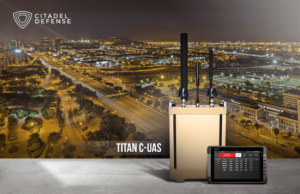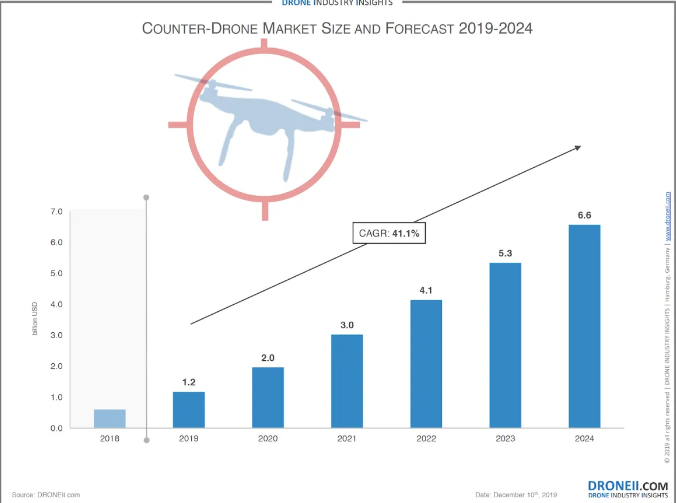
The global market for systems to defend against unmanned aircraft is growing rapidly as top Pentagon officials and members of Congress continue to prioritize their development and deployment across military and critical infrastructure applications.
An industry report released by the Center for the Study of the Drone at Bard College found there are 537 counter-UAS products on the market, sold by 277 firms and partnerships — up from 235 products from 155 manufacturers just two years ago.
Of these, 175 products are designed only for detection and 214 only for interdiction, with 138 systems advertised as capable of both, according to CSD. Radio-frequency (RF) and radar and the most commonly-used detection methods and RF or global navigation systems (GPS) jamming are the most common interdiction methods.
San Diego-based counter-UAS manufacturer Citadel Defense said it has been collaborating with three U.S. government agencies for the past six months on its autonomous detect-and-defeat system, Titan, which has been “successfully operated in real-world missions for CUAS protection at live events throughout the continental United States” during that period, according to the company. Applications of the Titan to date include VIP protection, port, critical infrastructure, marquee event and on-demand.
NATO is currently working with a number of counter-UAS manufacturers to gauge the effectiveness of various systems for counter-terrorism application, emphasizing the need for both lethality and minimal collateral damage. The experimentation and assessment project, announced last year under NATO’s Defence Against Terrorism Programme of Work (DAT POW), has selected “tens of companies” for a short-list, according to Claudio Palestini, an officer at NATO’s Emerging Security Challenges Division.
“NATO is doing quite a lot of work on the field of C-UAS, both capability development, procurement, policy development, doctrine, standardization, exercises, training, etc.,” Palestini told Defense Daily. “This project aims at doing a military utility assessment and comparing different technologies in terms of collateral damages. Technologies to be demonstrated have not been selected yet.”

One of the companies short-listed in Utah-based Fortem Technology, which bills its SkyDome defense platform as a scalable counter-UAS detection solution based on portable ground-based radars. Fortem also offers an interdiction solution, DroneHunter, that deploys a drone armed with a net to capture and safely bring down the unauthorized aircraft — an approach that may fit NATO’s search for systems with low collateral damage.
Pentagon acquisition chief Ellen Lord said counter-UAS systems are a top acquisition priority for the U.S. military in 2020. A report recently released by Drone Industry Insights expects the counter-UAS market to be worth $6.6 billion by 2024.